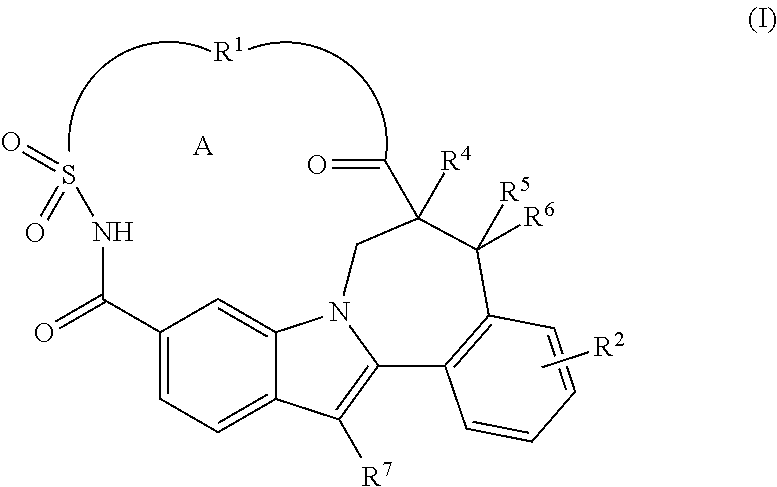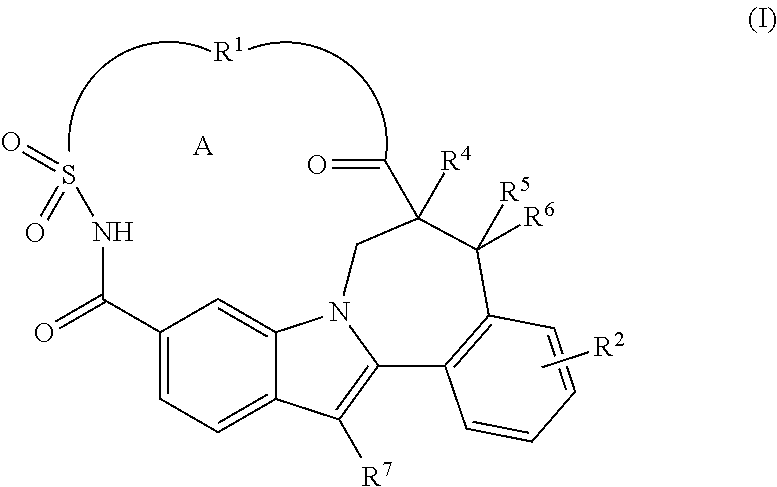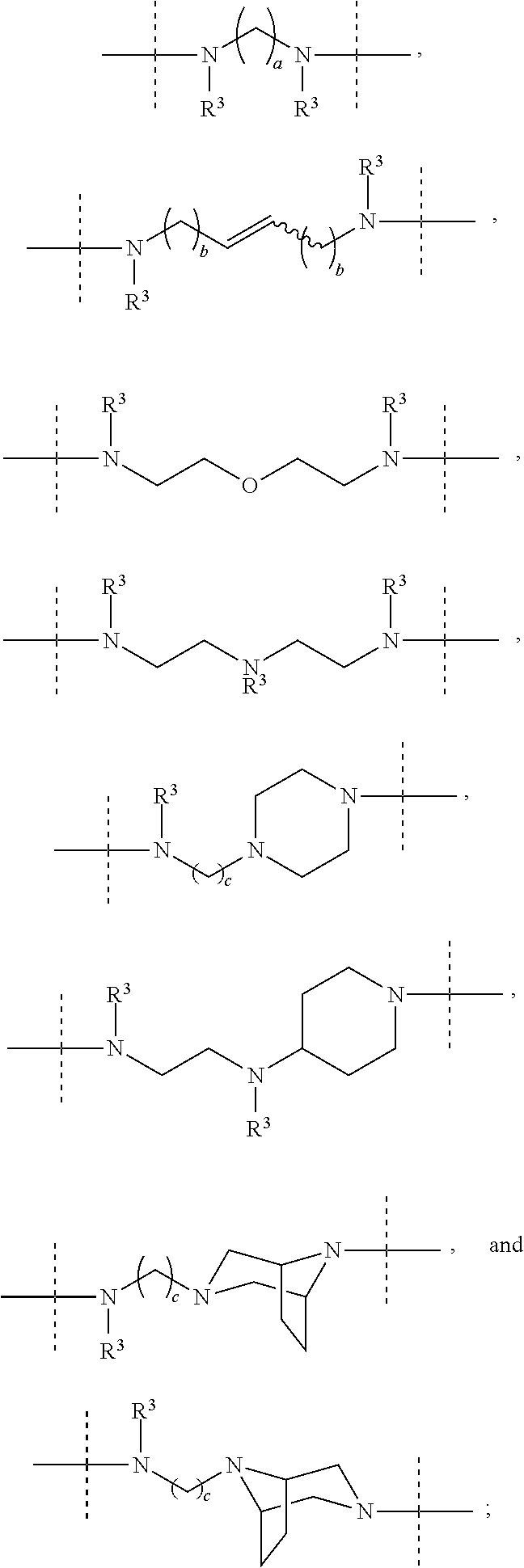Macrocyclic Indole Derivatives Useful as Hepatitis C Virus Inhibitors
a technology of indole and hepatitis c virus, which is applied in the direction of heterocyclic compound active ingredients, biocide, drug compositions, etc., can solve the problems of high rate of chronic infection, persistent infection, and existing infections that will continue to present serious medical and economic burden, and achieve favorable pharmacokinetic and metabolic profile, lack of toxicity, and favorable mutant prophile
- Summary
- Abstract
- Description
- Claims
- Application Information
AI Technical Summary
Benefits of technology
Problems solved by technology
Method used
Image
Examples
example 1
Synthesis of Compound 1
[0158]
Step 1
[0159]
[0160]A solution of NaOH (6.38 g) in 25 mL of water was added to a stirred solution of 1a (10-tert-butyl 6-methyl 13-cyclohexyl-3-methoxy-7H-indolo[2,1-a][2]benzazepine-6,10-dicarboxylate, synthesized as described in US 2007270406 A1) in THF (100 mL) and MeOH (150 mL). After 1 hour the reaction was concentrated under reduced pressure, then diluted with ice-cold water (150 mL). The pH of the resulting solution was adjusted to 6 with acetic acid (AcOH). The precipitate was collected by filtration, washed with water and dried under vacuum to give 1.90 g (98%) of 1b as a yellowish powder: m / z=488 (M+H)+
Step 2
[0161]
[0162]HATU (1.17 g, 3.08 mmol) was added under nitrogen to a stirred solution of 1b (1.00 g, 2.05 mmol), DIPEA (1.07 mL, 6.15 mmol) and 2,2′-oxybis(N-methylethanamine) (1.08 g, 8.20 mmol) in 30 mL of dry THF. After 1 h, the reaction mixture was quenched with water (100 mL) and extracted with ethyl acetate (EtOAc). The organic layer was ...
example 2
Synthesis of Compound 2
[0171]
[0172]A solution of 1 (56 mg, 0.092 mmol) in MeOH (15 mL) and THF (5 mL) was hydrogenated in an H-cube apparatus using a 10% Pd on Carbon cartridge. Then, solvent was evaporated and the residue was purified by column chromatography (CH2Cl2 / CH3CN, 9:1) to give 23 mg (41%) of the desired product 2 as a white powder: m / z=609 (M+H)+.
examples 3 and 4
Synthesis of Compounds 3 and 4
[0173]
[0174]The racemic mixture 2 was purified by SFC, using a 6.5 minutes run on a chiral CHIRALCEL OD-H column (250×10 mm, coated on 5 μm silica gel) and 55% methanol / 45% CO2 as mobile phase, at a flow rate of 10 mL / min and lead to the two pure enantiomers 3 and 4. Retention times under these conditions were observed at 4.25 min and 5.54 min.
PUM
| Property | Measurement | Unit |
|---|---|---|
| temperature | aaaaa | aaaaa |
| temperature | aaaaa | aaaaa |
| temperatures | aaaaa | aaaaa |
Abstract
Description
Claims
Application Information
 Login to View More
Login to View More - R&D
- Intellectual Property
- Life Sciences
- Materials
- Tech Scout
- Unparalleled Data Quality
- Higher Quality Content
- 60% Fewer Hallucinations
Browse by: Latest US Patents, China's latest patents, Technical Efficacy Thesaurus, Application Domain, Technology Topic, Popular Technical Reports.
© 2025 PatSnap. All rights reserved.Legal|Privacy policy|Modern Slavery Act Transparency Statement|Sitemap|About US| Contact US: help@patsnap.com



